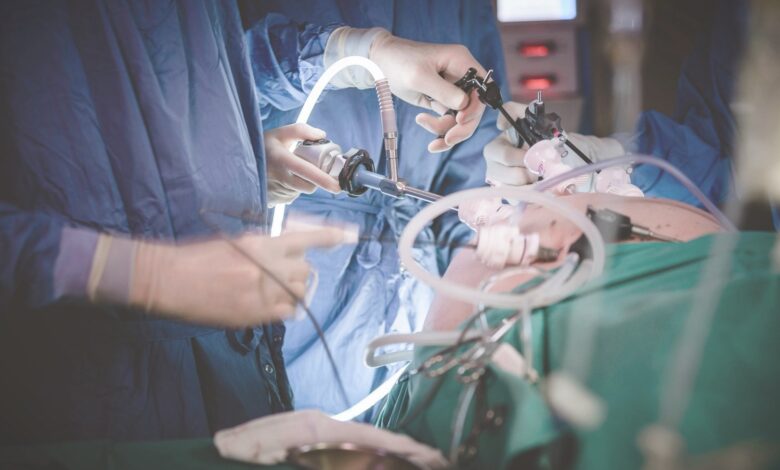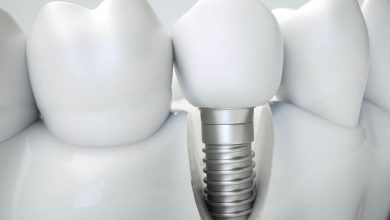How A Laparoscopic Ventral Hernia Repair Works

Are you considering a ventral hernia repair procedure or just curious about the common surgical option? Laparoscopic ventral hernia surgery, or “keyhole” surgery, has become an increasingly popular form of hernia repair over the last twenty years due to its minimally invasive nature. Although it isn’t suitable for all types of hernias, this laparoscopic procedure offers numerous benefits and can be performed quickly and with minimal disruptions to your life following the operation. In this blog post, we will discuss what exactly laparoscopic ventral hernia repairs are, their benefits, risks, and recovery process.
What is a Ventral Hernia and How Does it Happen
A ventral hernia occurs when an organ or tissue protrudes through a weakened area in the abdominal wall. This type of hernia can happen anywhere along the midline of the abdomen, from the sternum to the pubic bone. The most common cause of a ventral hernia is weakened abdominal muscles due to a previous surgical incision, but it can also be caused by obesity, pregnancy, or chronic coughing. While some people with ventral hernias do not experience any symptoms, others may experience pain or discomfort, especially while lifting heavy objects. In serious cases, a portion of the protruding tissue can become trapped or strangulated, cutting off blood flow to the affected area and requiring emergency surgery. If you suspect you have a ventral hernia, it’s important to speak with your healthcare provider to determine the best course of treatment.
Understanding Laparoscopic Ventral Hernia Repair
Ventral hernias are a common occurrence and can cause discomfort. However, it can be corrected through laparoscopic ventral hernia repair, a minimally invasive surgical procedure. In Las Vegas, you can find experienced and skilled surgeons who can perform the operation with precision. Instead of the traditional open hernia surgery, laparoscopic ventral hernia repair involves making small incisions, allowing the surgeon to use a tiny camera and specialized instruments to repair the hernia. Recovery time is usually minimal, and the pain level is low compared to the traditional procedure. With laparoscopic ventral hernia repair in Las Vegas, patients can regain their quality of life and return to their daily activities sooner.
Benefits of Laparoscopic Surgery for Hernia Repairs
Laparoscopic surgery is a modern and minimally invasive technique that has revolutionized hernia repair. Compared to traditional open surgery, laparoscopic surgery offers tremendous benefits such as lesser postoperative pain, faster recovery time, and reduced likelihood of complications. This innovative approach not only results in smaller scars but also enables surgeons to gain better visibility of the affected area under magnified imaging. By making smaller incisions and using specialized tools to maneuver around internal organs, laparoscopic surgery for hernia repair minimizes tissue trauma, leading to a quicker return to normal activities. Overall, laparoscopic surgery is a safer and more efficient option for hernia repair, and patients can expect to experience a faster and more comfortable recovery.
Preparing for Your Procedure
Preparing for a medical procedure can be daunting, but taking some simple steps can help you feel more at ease. It’s important to follow any instructions given by your healthcare provider, such as fasting or avoiding certain medications. Make sure to ask any questions you may have about the procedure beforehand, and be sure to have a clear understanding of what to expect. If you’re feeling anxious, try some relaxation techniques like deep breathing or visualization exercises. And don’t forget to arrange for transportation to and from your appointment. With a little preparation, you’ll be well on your way to a successful procedure.
What to Expect During the Surgery
For those who find themselves facing a no insurance hernia surgery in Las Vegas, the unknowns of the procedure can be overwhelming. It’s normal to feel anxious about what to expect during the surgery, but rest assured that your medical team is there to guide you through the process. Before the procedure, you will receive anesthesia to ensure you don’t feel any pain. Then, your surgeon will make an incision at the site of the hernia, repair the damaged area, and close the incision. Afterward, you may experience some discomfort, but pain medication can help manage any discomfort you feel. Remember, you’re in good hands, and your medical professionals will be there every step of the way to ensure a smooth and successful surgery.
Recovery After Laparoscopic Ventral Hernia Repair
Recovering from any surgical procedure can be daunting, but with advancements in laparoscopic ventral hernia repair, the recovery process has become much smoother and more predictable. Laparoscopic ventral hernia repair is a minimally invasive surgery that involves making small incisions and inserting a scope and tools through them to repair the hernia. Due to the smaller incisions, patients typically experience less discomfort and have shorter hospital stays than with traditional open surgery. During recovery, patients may experience some soreness and swelling in the incision area, but this should subside within a few days. By following post-operative instructions from your healthcare provider and taking it easy during the first few weeks of recovery, you’ll be back to your regular routine before you know it.
Tips to Manage Pain after Surgery
Recovering from surgery can be a difficult and painful process, but there are certain steps you can take to manage the pain and aid in recovery. One important tip is to stay on top of your pain medication schedule and take it as prescribed by your doctor. Additionally, engage in light physical activity, such as short walks or stretches, to prevent stiffness and promote healing. It’s also important to get plenty of rest and stay hydrated by drinking lots of water. Consider using heat or ice therapy to alleviate any discomfort, and make sure to communicate with your healthcare provider about any concerns or changes in your pain levels. With these tips, you can effectively manage your pain and ease into a more comfortable and swift recovery process.
All in all, living with a ventral hernia can be difficult, but it doesn’t need to take over your life. Laparoscopic surgery has become an incredibly popular and successful option for treating ventral hernias due to its minimally invasive nature. Understanding the procedure, what you need to do before the surgery, what to expect during and after the surgery, as well as how to manage the pain associated with Hernia Repair is important when considering this type of surgical procedure. We urge you to contact your doctor today if you think laparoscopic Ventral Hernia Repair may be right for you. By knowing what to expect and remaining informed throughout the entire process, you will be better prepared for any situation that may come your way on the road to recovery.






